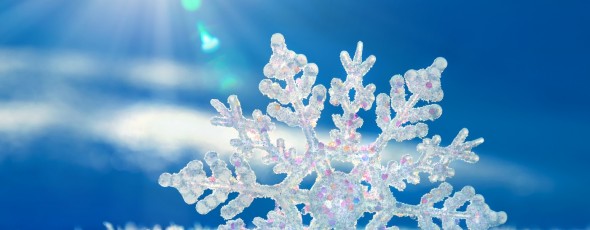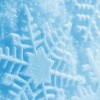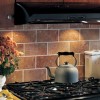By: www.doityourself.com
As winter approaches with its guarantee of ice, snow, and frigid temperatures, you should begin to take action early to prepare and protect your home for the season. It’s never too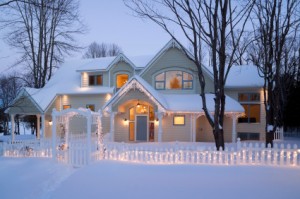 soon to start taking into consideration the numerous tasks that need to be done. You’re better off preventing any potential problems ahead of time; because once the chill of winter arrives anything that goes wrong in your home will inevitably be nothing but a headache to fix. Careful planning and preparation will ensure your utilities will run efficiently during the winter and in the end save you time, money, and a whole world of frustration. Outlined here are the major steps you should take to keep your winter home warm, comfortable, and safe.
soon to start taking into consideration the numerous tasks that need to be done. You’re better off preventing any potential problems ahead of time; because once the chill of winter arrives anything that goes wrong in your home will inevitably be nothing but a headache to fix. Careful planning and preparation will ensure your utilities will run efficiently during the winter and in the end save you time, money, and a whole world of frustration. Outlined here are the major steps you should take to keep your winter home warm, comfortable, and safe.
Heating
First and foremost, it’s very important to have a professional come inspect and service your heating unit each year before you begin to use it. This is done to ensure that your heater is both safe and functional. The earlier you arrange an appointment with a licensed heating professional the better, as they are liable to be booked up as the season approaches. You certainly don’t want to take the risk of your furnace breaking down on you during icy winter weather. The professional will perform maintenance tasks to keep your heater performing optimally during a standard check-up. This includes:
- Inspecting the thermostat for proper operation
- Inspecting the filter, and changing or cleaning filter as needed
- Checking all electrical components and controls
- Oiling the motors as necessary
- Inspecting the heat exchanger for possible cracks (This is important as a crack in the heat exchanger will introduce carbon monoxide into your home.)
- Checking the air flow to see if it is diminished, and if it is necessary to clean the evaporator coil
- Checking of air fuel mixture
Before you turn on your water heater or furnace, make sure there is nothing flammable stored next to it. Clear out the space and make room for your heater to function at its best.
Make sure to change or clean your furnace’s filters regularly. Clean filters improve the air flow and efficiency as well as lower your utility bills. Disposable fiberglass filters should be replaced, while electrostatic or electronic filters need to be washed regularly. Filters that become dirty restrict the air flow, reducing efficiency, and in the worst case, lead the heat exchanger to overheat.
Remove the sediment at the base of your water heater’s tank. Collected sediment greatly reduces the efficiency of the burner and can damage the interior lining of the tank when it heats up strongly.
If you are having trouble with your heating, look first for the most simple and obvious solutions. Make sure that all the access panels are secure with all the screws in place. Make sure your thermostat is set in the heating mode. Simply setting the dial above room temperature will not turn your heat on if the control is set in the air-conditioning mode.
When you’ve first turned on your heating system, you want to be sure that everything is running safely. Look out for strange signs and smells which don’t quite seem right. However, remember that it is normal for dust to collect on the heat exchanger over the summer, and the first time you turn on the heat the dust will burn off, resulting in a strong, distinct odor. This is normal; simply open your windows to let the odor dissipate more rapidly. The smell should soon go away, but if you are still detecting strange odors from the heater then you should shut it off and consult a professional.
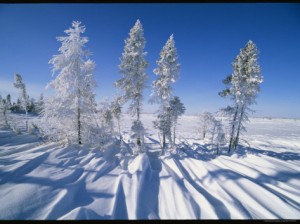 Once you are sure your heater is working, you can make sure that the heat distributes equally around the house. Open all your dampers and registers and turn the heat on in your house for a few hours. Then walk around your house to find which rooms and spots are the coldest. You should then adjust the thermostat so that the colder rooms become equally warm to the others, and adjust the dampers and registers in the hotter rooms to bring them down to the same level. Doing this trick ahead of time will save you a lot of trouble and irritation later on when it gets much colder out, and you have those cold spots in the house while others are way too hot.
Once you are sure your heater is working, you can make sure that the heat distributes equally around the house. Open all your dampers and registers and turn the heat on in your house for a few hours. Then walk around your house to find which rooms and spots are the coldest. You should then adjust the thermostat so that the colder rooms become equally warm to the others, and adjust the dampers and registers in the hotter rooms to bring them down to the same level. Doing this trick ahead of time will save you a lot of trouble and irritation later on when it gets much colder out, and you have those cold spots in the house while others are way too hot.
While you may think of ceiling fans as being strictly for the warmer weather, they can benefit your home during the winter as well. Ceiling fans will move around the hot air which gets trapped at the top of the room, lowering heating costs and reducing the condensation which forms at windows and glass doors. If you do not already have ceiling fans in your home, you may consider getting them installed for their year-round benefits.
Finally, a most important note: homeowners should invest in at least one high-quality carbon monoxide detector for their homes. Also have your smoke alarms ready and distributed throughout the house. If you’ve already got your detectors, replace the batteries and check to make sure they are working properly. Experts say that if the detector unit is older than 10 years then it still may not be activated by smoke just because it sounds off when the test button is pressed. Test older units with a smoke device or simply replace them to be on the safe side. Also examine your fire extinguishers, or purchase, charge, and replace them as necessary.
Floor Heating Systems
If your home is particularly prone to drafts and cold floors, you might consider the advantages of installing a floor heating system to regulate some extra warmth. Floor heating is available in hot water or electric cable, and installation into rooms or specific places within a room is not a difficult procedure. Electric cable systems are the easiest option for installation in individual rooms. You can have your electric floor heating system installed in either heat pads or heat cables, which are first installed into the sub-floor, covered with thin-set, and with tile or other masonry. You can also find compatible pads and cables for floors with carpeting or vinyl. Both 110 and 220-volt systems are available and controlled by a wall-mounted thermostat. You can find these systems through retailers of electrical equipment and some home centers, and floor heating mats usually through ceramic tile supply distributors. Floor heating should be installed through a joint procedure of an electrician and tile installer.
Chimneys and Fireplaces
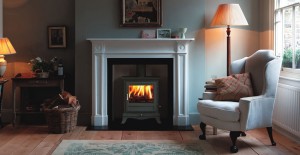 Have your chimney and fireplace inspected by a chimney service before you attempt to use your fireplace for the season, and have it cleaned if necessary. A cleaning is important because chimney flues that have become lined with creosote are fire hazardous.
Have your chimney and fireplace inspected by a chimney service before you attempt to use your fireplace for the season, and have it cleaned if necessary. A cleaning is important because chimney flues that have become lined with creosote are fire hazardous.
Make sure the condition of the spark arrestor on top of the chimney is inspected so that there are no tears in the fabric that would allow embers to escape, also becoming a fire hazard.
While ensuring that your heating system is up and running properly is the most important factor to consider for your winter-ready home, there are still quite a few other tasks you must take into consideration, ranging from the insulation of your home to all the exterior work you will need to accomplish before the first winter storm blows in.
(Check in for Part 2 next week!)


